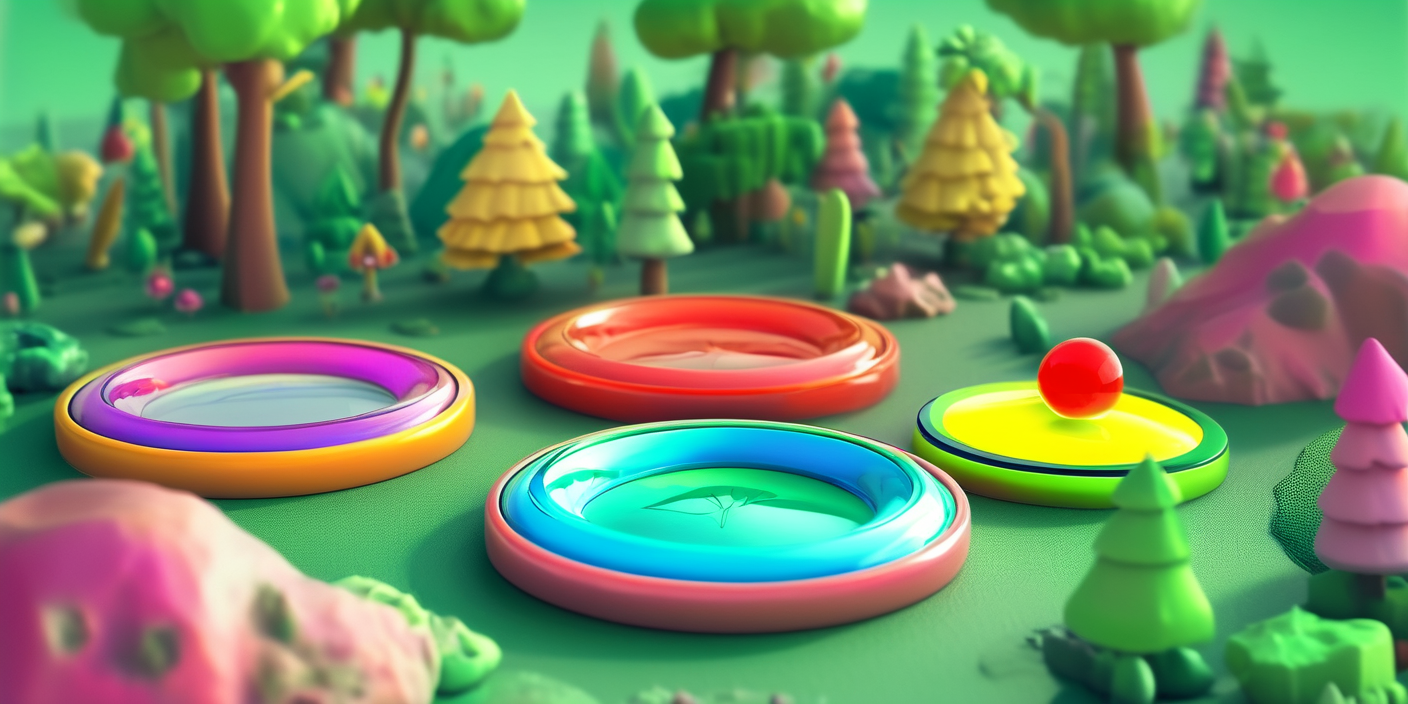Introduction: The Enigmatic World of Mood Rings
Mood rings, those captivating pieces of jewelry that seemingly change color with your emotions, have fascinated people for decades. Their vibrant hues shifting across the spectrum promise a glimpse into the inner workings of our feelings. But what does it actually mean when your mood ring displays a particular color, especially the serene and often-seen green? This article dives deep into the meaning of green on a mood ring, exploring the various interpretations and dispelling some common myths surrounding this fascinating piece of jewelry.
The Science (or Lack Thereof) Behind Mood Rings
Before we delve into the specifics of green, it’s crucial to understand the mechanics of a mood ring. Contrary to popular belief, mood rings don’t magically sense your emotions. Instead, they react to changes in your body temperature. A thermochromic liquid crystal embedded within the ring’s stone changes color based on the temperature of your skin. This means that factors like the ambient temperature, your physical activity, and even your state of hydration can all influence the color displayed.
The Thermochromic Liquid Crystal: The Key Player
The heart of a mood ring is its thermochromic liquid crystal. This special material is composed of microscopic molecules that align differently depending on the temperature. These shifts in molecular alignment alter the way the liquid crystal interacts with light, resulting in the visible color change. Therefore, the color you see isn’t a direct reflection of your emotions, but rather a representation of your skin’s temperature.
Interpreting Green on Your Mood Ring: A Spectrum of Meanings
While the science behind mood rings is straightforward, the interpretation of their colors remains largely subjective. Green, a color often associated with nature, tranquility, and balance, is frequently interpreted in several ways when seen on a mood ring.
Green: The Color of Calm and Balance
The most common interpretation of green on a mood ring is a state of calm and balance. It suggests a sense of equilibrium, emotional stability, and a feeling of being at peace with yourself and your surroundings. If your mood ring shows green, it might indicate a relaxed and content state of mind.
Green: Connectedness to Nature and Harmony
Green is the color of nature, and seeing it on your mood ring can be interpreted as a strong connection to the natural world. It can suggest a feeling of harmony with nature, a sense of grounding, and a peaceful connection to the environment around you. This interpretation resonates with many who appreciate the calming effects of nature.
Green: Growth, Renewal, and Hope
In many cultures, green symbolizes growth, renewal, and hope. Seeing green on your mood ring could represent a period of personal growth, a sense of optimism about the future, and a feeling of hopefulness. It might signify the flourishing of new ideas, relationships, or opportunities.
Green: Variations in Shade and Their Meanings
The shade of green displayed on your mood ring can also influence its interpretation. A bright, vibrant green might suggest heightened energy and enthusiasm, while a darker, more muted green could indicate a quieter, more introspective state. Subtle differences in hue can offer a more nuanced understanding of your emotional state.
Factors Affecting Mood Ring Color: Beyond Emotions
It’s crucial to remember that several factors influence the color displayed on your mood ring, making it unreliable as a precise emotional indicator. These factors include:
Ambient Temperature: A Significant Influence
The temperature of the surrounding environment significantly impacts the color of your mood ring. A hot room will likely result in a different color than a cool one, regardless of your emotional state. This is a key reason why mood rings are not considered accurate emotional gauges.
Physical Activity and Body Temperature
Physical activity raises body temperature, leading to a change in the mood ring’s color. Even simple tasks like exercising or drinking a hot beverage can alter the displayed hue, potentially masking your true emotional state.
Hydration Levels: An Often-Overlooked Factor
Dehydration can also affect your body temperature and, consequently, your mood ring’s color. Proper hydration is essential for maintaining a stable body temperature, which can lead to more consistent readings (although not necessarily accurate emotional readings).
Debunking Myths and Misconceptions about Mood Rings
Many misconceptions surround mood rings. Understanding these myths is crucial to interpreting the colors accurately (or rather, understanding their limitations):
Myth 1: Mood rings accurately reflect emotions.
This is the biggest myth. Mood rings respond to temperature, not emotions directly.
Myth 2: Specific colors always mean the same thing.
The interpretation of colors is subjective and often varies across individuals and cultures.
Myth 3: Mood rings are a reliable tool for self-diagnosis.
Mood rings should never be used as a diagnostic tool for medical or psychological conditions.
Final Thoughts: Enjoying the Spectacle of Color Change
While mood rings may not provide a precise reading of your emotions, they remain a fascinating and fun piece of jewelry. The changing colors offer a captivating visual spectacle, and interpreting the shades can be a playful and engaging exercise in self-reflection. Understanding the science behind mood rings, as well as the subjective nature of color interpretation, allows for a more informed and enjoyable experience with this unique accessory.

